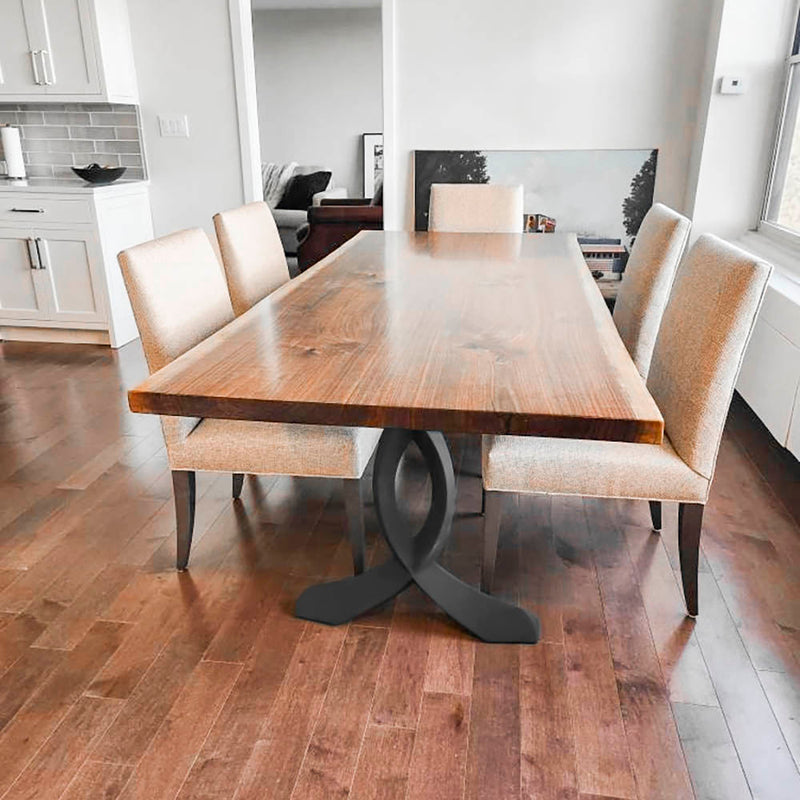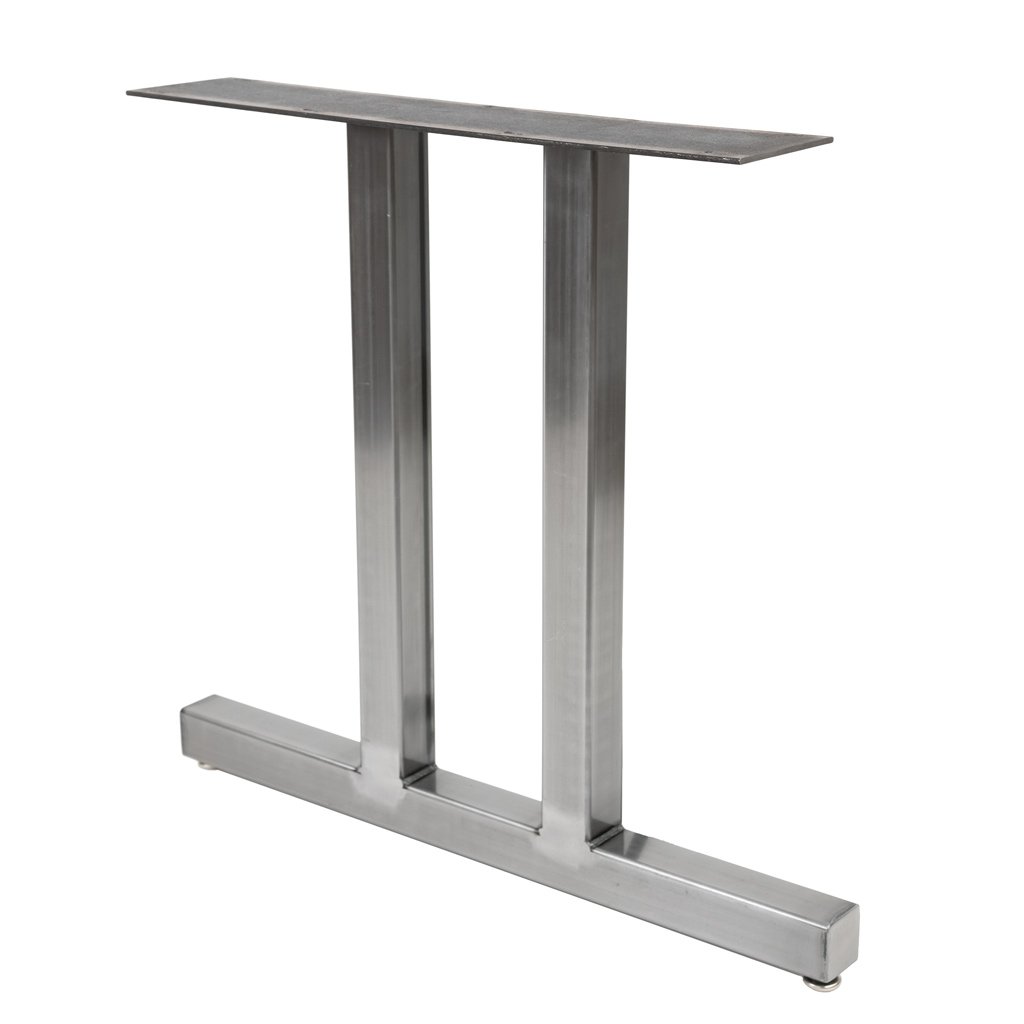How to Maintain and Care for Your Dining Room Table Legs
How to Maintain and Care for Your Dining Room Table Legs
Blog Article
Expert Tips for Installing Dining Space Table Legs for Optimum Stability
When it involves mounting dining area table legs, accomplishing optimum stability is extremely important for both performance and looks. The process begins with picking the best materials and equipment, followed by precise placement and consideration of weight circulation. Each step plays an essential role in making sure that the ended up item holds up against day-to-day usage without endangering security or layout honesty. Comprehending the subtleties of these components can significantly affect the general result. What particular methods can improve stability even better?
Select the Right Legs
When selecting the appropriate legs for your eating room table, it is vital to take into consideration both capability and looks. The legs you choose will substantially affect the general layout and security of the table. First, evaluate the table's meant use; if you expect constant events, tougher legs, such as those made from solid timber or metal, might be much more appropriate, as they supply enhanced sturdiness and assistance.
Typical dining tables typically vary from 28 to 30 inches in elevation, so make certain the legs align with this requirement for comfort. Tapered legs can include a modern touch, while turned legs could communicate a much more classic visual.

Select Appropriate Hardware
How can the appropriate hardware boost the security and long life of your dining space table? The option of suitable hardware is vital to making sure that the legs of your table are safely attached and able to stand up to regular usage. High-quality screws, bolts, and brackets give the needed strength to support the weight of the table, in addition to any kind of added loads put upon it throughout gatherings or meals.
When selecting screws, go with those made from durable products such as stainless steel or brass, which stand up to corrosion and keep honesty gradually. The size of the screws is equally essential; they must penetrate deeply into the table's framework without jeopardizing stability. For bolted connections, consider using lock washing machines to avoid loosening as a result of resonance or activity.
Furthermore, using corner braces can add additional support, particularly for larger tables or those with heavier tops. These brackets distribute weight uniformly and help maintain the table's shape. Making sure that the hardware you choose is suitable for the details materials of your table will certainly even more improve its overall security and longevity, enabling you to enjoy your dining experience for many years to come.
Ensure Appropriate Placement
Appropriate placement of eating space table legs is important for both aesthetic appeal and practical stability. To attain optimal placement, begin by determining the range from the table's corners to the leg attachment points.
Make use of a level during setup to verify that each leg is vertical to the tabletop. It is recommended to mark the desired leg positions on the bottom of the table with a pencil or masking tape prior to protecting them.
Additionally, ascertain the alignment after the preliminary screws are tightened up, as modifications may be necessary before completely securing the equipment. By prioritizing appropriate alignment, you not just enhance the table's total design yet additionally ensure that it remains functional and secure for many years to find.

Think About Weight Circulation
After guaranteeing correct placement of the dining-room table legs, it is essential to think about weight distribution to enhance security and functionality. dining room table legs. Correct weight circulation is important in protecting against wobbling and ensuring that the table can sustain its intended lots without threat of tipping or falling down
When placing the legs, find more info ensure they are positioned at equal distances from the facility of the table to evenly disperse the weight throughout the framework. Take into consideration the weight of the tabletop and any items that will frequently relax on it, such as tabletop home appliances or attractive pieces. Tables with larger surface areas must preferably have legs positioned closer to the corners, as this optimizes the base of assistance and lessens the danger of instability.
In addition, if the table is intended for usage in a high-traffic location, consider making use of much heavier products for the legs or adding stabilizing elements, home such as cross-bracing or a lower rack - dining room table legs. These adjustments can help keep balance and protect against shifting throughout usage. Inevitably, a well-considered weight distribution approach will dramatically boost the table's overall efficiency, ensuring it continues to be a attractive and useful focal point for your dining area
Test Stability Before Use
Evaluating the stability of the eating area table prior to use is a critical step that must not be ignored. If the table reveals instability, recognize the legs or joints that may call for change.
Next, check that all bolts and screws are tightened up effectively. check my blog Loose connections can result in instability and possible damages gradually. If required, utilize wood glue on joints to enhance security, guaranteeing to enable adequate drying out time.

Final Thought
To conclude, the installment of eating room table legs requires mindful factor to consider of products, hardware, alignment, and weight circulation to attain maximum stability. By choosing premium fasteners and tough legs, making sure precise alignment, and dispersing weight evenly, the architectural honesty of the table can be significantly enhanced. Conducting a security examination prior to routine use even more makes certain that the table will certainly stand up to daily pressures, thus offering a secure and dependable dining experience.
When it comes to setting up eating space table legs, accomplishing optimum stability is critical for both functionality and aesthetics. The legs you choose will considerably impact the overall design and security of the table (dining room table legs). Typical eating tables typically vary from 28 to 30 inches in elevation, so make certain the legs straighten with this requirement for comfort.Correct positioning of eating area table legs is necessary for both visual allure and useful stability.In verdict, the installment of dining space table legs needs cautious consideration of products, equipment, positioning, and weight circulation to attain optimum stability
Report this page